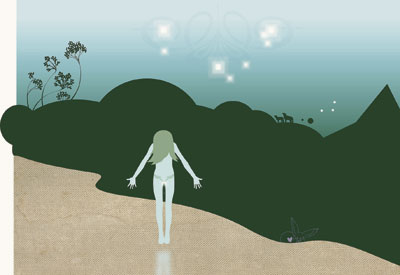| Umělec magazine 2006/1 >> Filip Nerad | List of all editions. | ||||||||||||
|
|||||||||||||
Filip NeradUmělec magazine 2006/101.01.2006 Jiří Ptáček | new faces | en cs |
|||||||||||||
|
At the beginning of the century a small circle of artists from Brno’s FaVU (Faculty of Fine Arts), who investigate the language of animated films, converged around filmmaker Filip Cenek. Typical for this creator were short-term alliances between a few artists, rearranging of characters and various language of animation narrativity, a reminiscence to a generation’s experience with fairytale creation and frequent use of musical accompaniment. Some time went by, the scene in Brno has changed, but this exact offshoot is sprouting anew. The works of Petr Strouhal, Jan Žalio, Petr Kocourek, Jan Šrámek or Pavel Švec are not based on Cenek’s lessons but a new climate is developing in various directions. The basic aspects of the pale, techno-emotional mixture of pictures have remained.
A certain link between the first and the second generation of the circle in Brno is the invisible presence of Filip Nerad. He worked with Cenek’s close creative partner, Jiří Havlíček, and with the team Cenek, Havlíček, Filip Nečas and Magdalena Hrubá, he created the animation Nora and Petyja, which has two versions that act as a complement to one another. The second version was the work of Cenek and Havlíček alone, although they used material from the previous version in it. Only after a careful viewing of both animations will certain details, along with the progression of the narration, become clear. Nerad was born in Prostějov in 1977. He traded the studio of Richard Fajnor for the studio of Tomáš Ruller. He is a DJ and a multimedia artist. His work comprises animation, intermedia realizations, websites, computer graphics and drawings. Already his productions from 2002 signaled the delicate, spiritually based sensitivity with which he chooses his topics. He created the video, Jin li bai hua thou shan, with Lenka Kočišová where a cauliflower acted as a golden mountain over which wind blows golden flakes. This wonderful greengrocer’s Tao together with the empty, glaring beauty of glimmering mountains is the beginning of Nerad’s representations of the civil world in its symoblic measure. The animation, Jesus Says Goodbye To You Every 35 Seconds, is a loop in which the Saviour takes his leave in the concise language of an advertising projection screen. In 2003 he created Zorilor, a multi-media performance under 15 minutes in duration, with Jiří Havlíček, and a couple of installations Hi Everybody (Ahoj všichni) and Haná. Nerad and Havlíček while wearing black masks stand rigidly behind the dj’s mixer. Behind them is a projection of black and white urban architecture. For a moment the projection shows a text with a story, but no one, not even the fastest reader can manage to understand the story. The dull modernity of the houses is accompanied with an arrangement for the performance a la Residents of the 21st century which seems, unfortunately, somewhat unintelligible. The viewer remains uncertain to what extent Nerad, together with Havlíček, is either striving for a spectacular Vjing experience or to what extent they are trying to achieve multiple narrations for the senses. The solo installation of Nerad’s Hi Everyone is composed of a manipulated photo of Brno and of a music composition played through headphones. The city landscapes are dominated by a gigantic gray building, where a dog’s barking renders the commencement of the rhythmical music. Brno moves to second place, the feeling of an unfriendly but beautiful urban periphery is overwhelming. Haná is based on a similar principle. The viewer watches a small gray flag in a window and is stimulated by ambient electronics from loudspeakers. The music slowly changes into dynamic drum’n’bass. Similarly to Hi Everyone, we experience how music stimulates the movement of the mind, while we are still looking at an unattractive static object. At the moment Nerad is working with computer graphics of landscapes “inhabited” by people, animals and plants. If artists from the art nouveau period had had graphic s programs then it would seem that they would probably have expressed themselves in a similar way. The graphics programs help Nerad to move closer to his intention: to cross the limitations of a code by deciphering it and to disentangle the geometry of the meanings in the space of poetry.
01.01.2006
Recommended articles
|
|||||||||||||









Comments
There are currently no comments.Add new comment